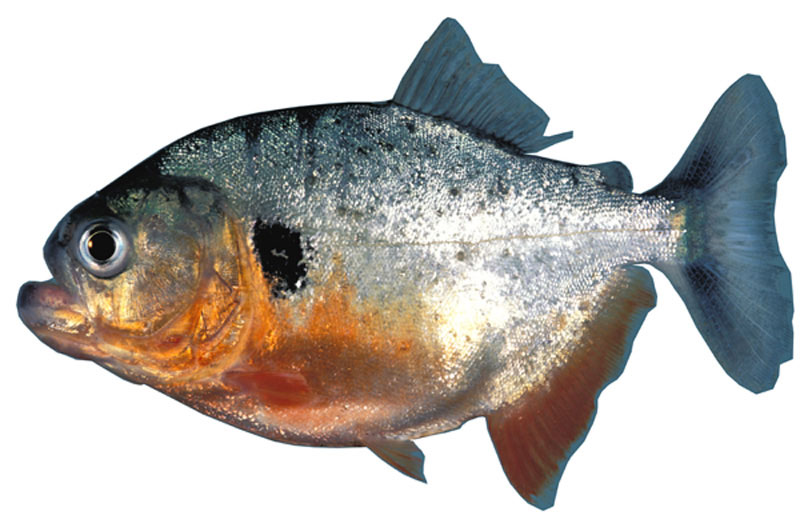Piranhas' Bark as Bad as Their Bite

Piranhas are already feared for their sharp teeth and meat-eating ways, and now a ferocious "bark" can be added to the list. Aggressive red-bellied piranhas produce bark-like sounds to scare off other piranhas, a new study shows.
Researchers from the University of Liège, Belgium, had noticed that red-bellied piranhas (Pygocentrus nattereri) make barking noises when they are picked up by humans. To figure out why and how, the team suspended a hydrophone into a tank containing piranhas and recorded any sounds they made throughout the day. They also filmed the fish so that they could later match up the sound recording with the film footage. [Image Gallery: Freaky Fish]
The recordings showed that the fish were generally silent and non-combative. As soon as one was confronted by another, however, silence turned to barking.
While observing the piranhas swimming around the tank and competing for food, the researchers noted that the fish produced three distinct combative sounds. The first was a bark-like noise that they made during so-called frontal displays, when two piranhas would swim rapidly toward each other and remain face to face. "This sound could therefore be interpreted as a warning signal during an intimidation phase between two individuals," the researchers write in the current issue of the Journal of Experimental Biology.
This was the same barking that the piranhas produced when picked up by the researchers.
The second was described as a short, drum-like percussive sound that the fish produced when fighting over food and circling its opponent. The third noise was described as a softer "croaking" sound that they made with their jaws when snapping at each other.
Previous research had found that piranhas produce noises using muscles attached to their swim bladders, but scientists weren't sure how the swim bladder was involved in sound production. To find out, study researcher Eric Parmentier and his team stimulated the red-bellied piranhas' swim-bladder muscles to contract.
Get the world’s most fascinating discoveries delivered straight to your inbox.
Results showed that the swim bladder stopped vibrating as soon as the muscles finished contracting. This meant that the muscles were directly driving the swim bladder's vibrations, the researchers said. The frequency, or pitch, of the bark and drum sounds was determined by the muscles' contraction, not by any resonant properties of the swim bladder itself.
While the well-fed piranhas were generally peaceful, they occasionally attacked each other and even nipped at the researchers' fingers.
"We both visited the hospital because we were bitten, and Sandie's finger was nearly cut in half," Parmentier said, referring to his colleague Sandie Millot, in a statement.
Even so, the Encarta encyclopedia and other sources note that tales of vicious attacks on humans are mythical. The fish are known instead to eat worms and small fish.
"There are no documented human deaths from piranha attacks," according to the Encarta. "A common feeding behavior is to nip off parts of the fins or scales from other types of fish. This cropping tactic allows the victim to survive and regrow the injured parts, providing a kind of renewable food resource for piranhas."
Parmentier said the researchers now aim to study whether the fish are vocal when mating. They may have to travel to the piranhas' native waters of Brazil to find out, since the fish are not prone to reproduce in a tank setting.
You can follow LiveScience writer Remy Melina on Twitter @remymelina. Follow LiveScience for the latest in science news and discoveries on Twitter @livescience and on Facebook.
 Live Science Plus
Live Science Plus





